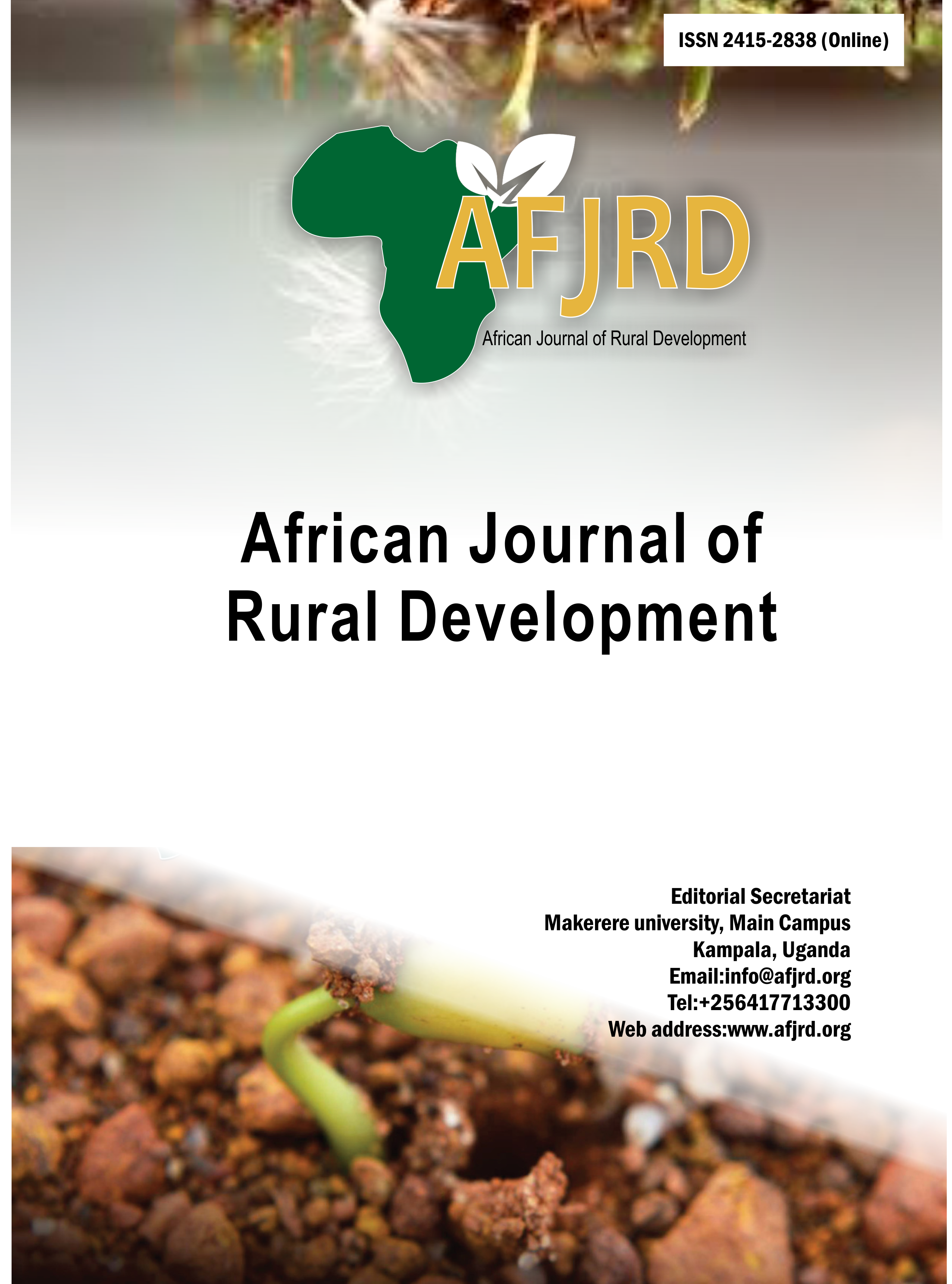Post- harvest handling practices, moisture content and aflatoxin status in maize samples from selected hammer milling centers in Uganda
Main Article Content
Abstract
In Uganda, emerging evidence points to an increasing prevalence of aflatoxin contamination in cereal-based food products at toxic concentrations, necessitating routine surveillance to safeguard public health. We evaluated aflatoxin levels in maize from milling centers across eight districts and investigated associated post-harvest handling practices. Data were analyzed using Microsoft Excel (2016), Graph Pad Prism (v6.0), and IBM SPSS (2019). Data revealed that 55% of moldy maize was processed for human consumption, 30% was diverted to animal feed, and 15% was discarded. Regarding drying practices, 58% of respondents used tarpaulins, 16% dried maize directly on bare ground, and 26% milled maize without prior quality assessment. Dryness assessment methods were largely informal: 38% used the biting test, 18% a metallic rod, 9% each used peeling or noise tests, while only 10% employed moisture meters. Notably, 17% did not assess dryness at all. While all samples exhibited moisture content below the recommended 12.5% threshold, significant inter-district differences were observed (p = 0.0014). Aflatoxin G predominated in maize samples from most districts, whereas aflatoxin B was more prevalent in samples from Kampala district. Mean total aflatoxin concentrations ranged from 0.90 ± 0.46 ppb (Kampala) to 54.18 ± 0.0 ppb (Mityana), with significant regional variation (p = 0.0034). Alarmingly, all maize samples from Mityana district had total aflatoxin concentrations above the Uganda National Bureau of Standards (UNBS) regulatory limit of 10 ppb. These findings underscore the need for improved post-harvest handling and stricter regulatory enforcement to mitigate aflatoxin-associated public health risks.
Article Details

This work is licensed under a Creative Commons Attribution 4.0 International License.
